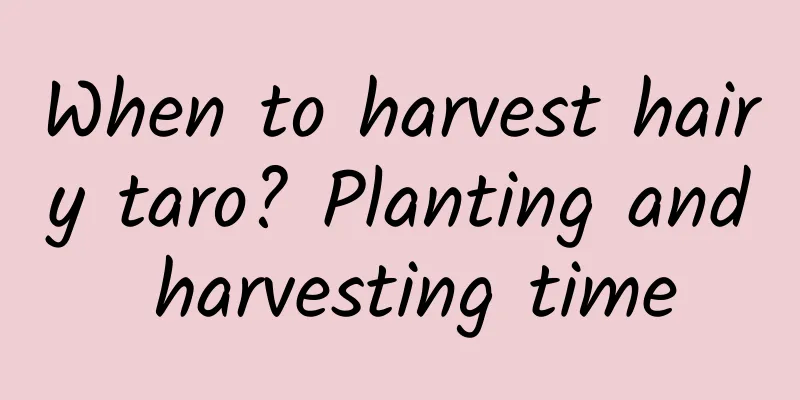Which flowers can cause adverse reactions to the human body?

1. Lily: May cause insomniaThe fragrance of lilies is strong. If you smell it for a long time, it will make you too excited and cause insomnia. It is best not to grow lilies, especially in the bedroom, otherwise people who already suffer from insomnia or shallow sleep will find it even more difficult to fall asleep when surrounded by its fragrance. 2. Narcissus: May cause dizziness, vomiting, and diarrheaDaffodils are divided into two types: traditional daffodils and foreign daffodils. The flowers, branches and leaves of traditional daffodils are all poisonous. If you inhale the fragrance of daffodils during sleep, you will easily become dizzy. Although it is not good to worship foreign things, if you want to grow daffodils indoors, you should try to choose foreign daffodils, which have no fragrance and will not cause adverse reactions to the human body. 3. Pothos: Fighting for OxygenIts breathing function is too prominent at night. Not only does it compete with humans for oxygen, it also releases a large amount of carbon dioxide, causing the carbon dioxide concentration in the room to rise rapidly. It is not suitable to grow large-leafed green radish, especially in the bedroom. 4. Rose: causes chest tightness and breathing difficultiesRoses are mostly grown outdoors or in gardens, so there is no need to worry if you grow them outdoors. If it is indoors, its fragrance can also cause adverse reactions such as chest tightness, shortness of breath, suffocation and breathing difficulties. 5. Hyacinthus: The bulbs are poisonous and the smell can cause insomniaIts harm is not only that the fragrance can cause insomnia and cause stress to the body's organs. Moreover, its smell can make people feel tired and weak. The most important thing is that the bulbs of hyacinth are poisonous. If eaten by mistake, it may cause diarrhea or even stomach cramps. Families with children should pay special attention to it. 6. Tuberose: Causes cough and wheezingIts smell is also more suitable for outdoor cultivation. Especially at night, the fragrance it emits is actually exhaust gas, and it can easily cause coughing and asthma. 7. Dieffenbachia: The juice is poisonousThe leaves and flowers of Dieffenbachia contain oxalic acid and asparagine, which are extremely toxic. Once they come into contact with the skin, they will cause itching that is difficult to relieve. Its fruit is even more poisonous. If accidentally ingested, it can cause swelling and pain in the tongue and throat, and even cause inability to speak. And this symptom will last for a week, and in severe cases it will cause nausea, diarrhea, etc. 8. Ferns: Can cause allergic reactionsFerns produce spores, which are similar to pollen. For those who are allergic to pollen or have allergic constitutions, they may cause allergic reactions. Therefore, people who are prone to allergies are not suitable for growing ferns. 9. Mimosa pudica: causes hair lossThe whole plant of mimosa contains trace amounts of toxins because it contains a substance called mimosa alkaloid. Long-term contact can cause hair to turn yellow and fall out. In addition, mimosa does not carry out photosynthesis at night, and will release toxic substances, which is harmful to the body if kept indoors. 10. Poinsettia: causes vomiting and abdominal painIt releases toxins that are harmful to the human body and can cause respiratory or lung allergies. The white juice secreted from the branches and leaves is poisonous. Once it comes into contact with the skin, it will cause an allergic reaction, resulting in redness, swelling, fever, and even ulcers. |
<<: Why is pumpkin called pumpkin? What are the benefits of eating pumpkin?
>>: What flowers are suitable for beginners
Recommend
What is Huaishan? What is the difference between Huaishan and Yam?
1. What is Huaishan? Huaishan refers to Huai yam,...
How to water the Star Beauty
1. Watering in different seasons Generally, autum...
How to take care of Bodhi tree in winter?
The trunk of the Bodhi tree is thick and majestic...
Don't mistake Amaryllis for Agapanthus
Introduction to Agapanthus Agapanthus africanus, ...
How often should Wanchongshan be watered?
How often should Wanchongshan be watered? Wanchon...
The efficacy and function of Tianshan Yacon
Indications Tianshan yacon is one of the very few...
Cultivation methods and precautions of dense leaf lotus
1. Maintenance methods 1. Soil: The soil for bree...
How does coleus survive the winter?
Temperature requirements of coleus Compared with ...
Leek cultivation technology and key points
Leeks are a common vegetable that can be grown al...
The main value of seven flowers
Ornamental value First of all, they are unique to...
Can elm trees be planted in the yard?
Can I plant elm trees in my yard? Elm trees can b...
What fertilizer is best for ivy
Time to fertilize ivy Ivy grows vigorously in spr...
What to do if the leaves of the lucky tree fall off when touched? How to save the fallen leaves
1. Water appropriately Reason: When caring for th...
How to fertilize the red spider lily? Can urea be used to fertilize the red spider lily?
1. How to fertilize 1. Fertilization during the g...
What vegetables are suitable to grow in early spring?
What vegetables are suitable to grow in early spr...









